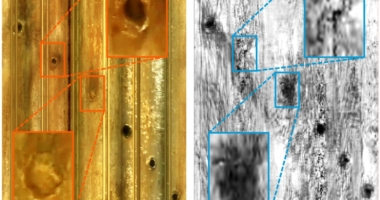Barcodes and RFID technology are two popular options for labeling and scanning products, and they differ in their working principles, functions, and applications. RFID technology uses radio waves for non-contact data exchange and storage, and RFID tags have a long reading distance, faster data reading speed, high data security, anti-counterfeiting, and traceability features. However, RFID tags and reader devices are more expensive than barcodes and require technical knowledge and experience to ensure the desired read rate. Barcodes, on the other hand, are cheaper and universal, but they have short recognition distance, easily damaged labels, limited data storage, and low reading efficiency. By understanding the advantages and disadvantages of barcode and RFID technology, you can make an informed decision when choosing the right labeling and scanning equipment for your business needs.
Distinguishing Between RFID and Barcode Devices
RFID and barcodes are both used to store product information on labels, but they differ in their functions and applications. To help you choose the right labeling and scanning equipment, it’s important to understand the differences between the two technologies.
Differences in Function
Barcodes use a pattern of parallel lines formed by black and white bars of different reflectivities to represent information. When scanned by a barcode reader, smartphone, or printer, the item’s information is identified. Barcodes come in various sizes and shapes, and their recognized content is unaffected by their size or shape.
RFID technology uses radio frequency identification to communicate data between RFID readers and tags without physical contact. RFID tags have microchips and radio antennas that store unique data and transmit it to the reader. RFID tags come in two types: active and passive. Active tags have their own power source to transmit data, while passive tags require nearby readers to emit electromagnetic waves and receive the energy to activate the tag and transmit its stored information.
Differences in Application
RFID technology has a wide range of applications, including animal chips, car chip anti-theft devices, access control, parking lot control, production line automation, material management, and cargo marking.
On the other hand, barcodes are used to mark the country of origin, manufacturer, commodity name, production date, book classification number, category, date, and other information. As a result, they are commonly used in commodity circulation, book management, logistics management, banking systems, and other industries.
By understanding the differences between RFID and barcode devices, you can make a more informed decision when choosing which technology to use for your labeling and scanning needs.
Comparing Barcode and RFID Technology
Barcode and RFID technology are two popular options for labeling and scanning products. Both have their advantages and disadvantages. Let’s take a closer look at how the two technologies differ.
Different Working Principles
RFID technology uses radio waves for non-contact data exchange and storage, while barcode technology combines coding, printing, identification, data collection, and processing to achieve its purpose.
In RFID identification systems, electromagnetic waves facilitate the reading, writing, and communication of electronic tags. Meanwhile, barcode readers recognize the pattern of black and white bars printed on the barcode label.
Advantages and Disadvantages of Barcodes
Barcodes have some advantages over RFID technology, including their universality, affordability, and lightweight labels. Barcode readers are also able to read barcodes from other stores. However, barcodes have some significant disadvantages as well. Barcode readers have a short recognition distance, and the labels are easily damaged by water or other liquids. Additionally, they can only store limited amounts of data, and barcode readers cannot perform group reading.
Advantages and Disadvantages of RFID
RFID technology has several advantages over barcodes. RFID tags can store more data, and RFID readers can perform group reading, making the process more efficient. Additionally, RFID tags are more difficult to counterfeit than barcode labels. However, RFID technology is more expensive than barcode technology, and RFID tags are often used in clothing, shoes, and bags instead of in supermarkets or convenience stores.
By understanding the advantages and disadvantages of barcode and RFID technology, you can make an informed decision when choosing the right labeling and scanning equipment for your business needs.
Pros and Cons of RFID Technology
RFID technology has several advantages over barcodes. RFID tags have a long reading distance, and multiple tags can be read at once, resulting in faster data reading speed. Additionally, RFID tags have high data security, can ensure product authenticity, and have anti-counterfeiting and traceability features. RFID tags are also waterproof, anti-magnetic, and high-temperature resistant, ensuring the stability of the application.
Furthermore, RFID technology stores information on computers and can store a large amount of information, making it suitable for various applications.
However, RFID tags and reader devices are more expensive than barcodes. RFID tags and readers also require technical knowledge and experience to ensure the desired read rate.
It is essential to select suitable products based on your actual needs. Handheld-Wireless is committed to providing various customized labels and handhelds to global customers for RFID and barcode related equipment.
By understanding the advantages and disadvantages of RFID technology, you can make an informed decision when choosing the right labeling and scanning equipment for your business needs.
Don’t miss interesting posts on Famousbio









